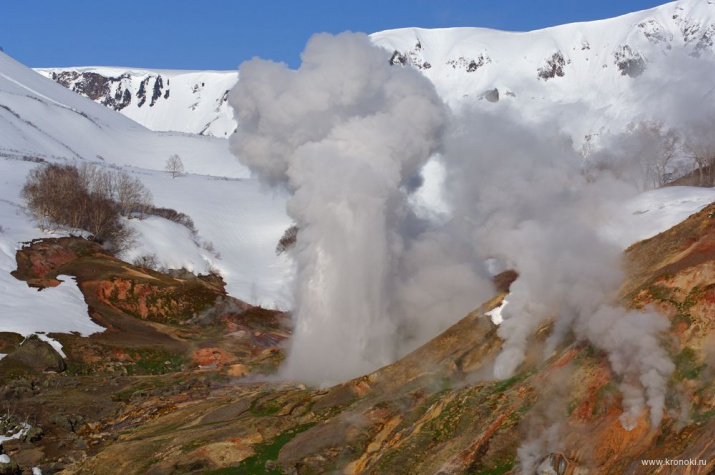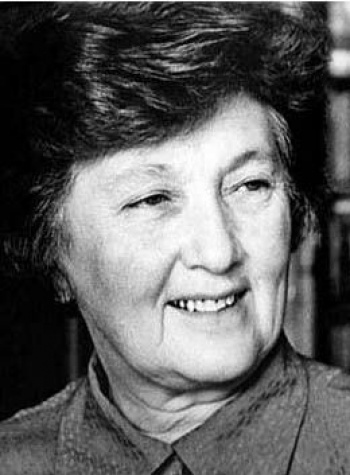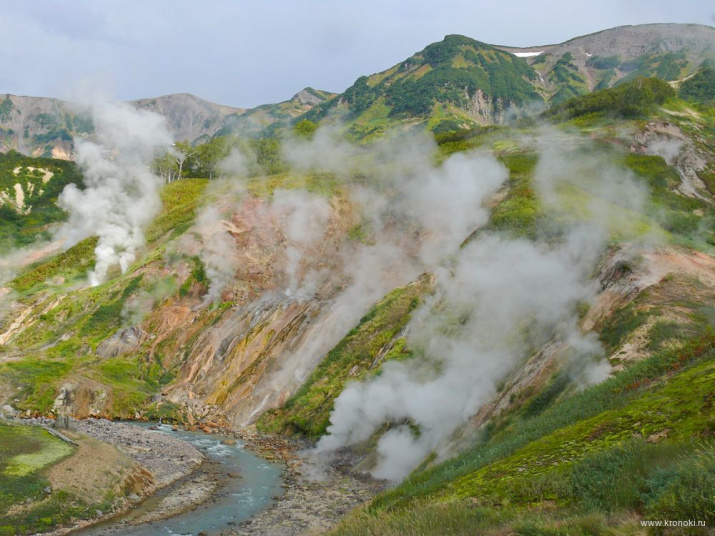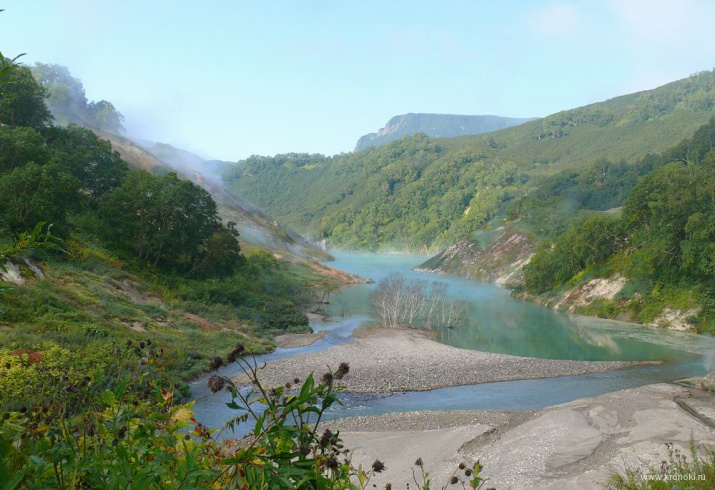Yesterday - on November 14 - was the birthday of geologist Tatyana Ustinova who discovered the Valley of Geysers.
The Valley of Geysers is a geyser field in the territory of the Kronotsky Nature Reserve - the most visited place in Kamchatka.
There are only five major geyser fields in the world: the Valley (Iceland), Yellowstone National Park (Wyoming, USA), The Taupo Volcanic Zone (New Zealand), the Valley of Geysers (Kamchatka, Russia) and El Tatio (Atacama Desert, Chile).
Unlike other geyser fields the valley in the Kronotsky Nature Reserve is the most compact one: several hundred pulsating springs and geysers splash, hiss, seethe and bubble in the area of 4 square kilometers. All these geothermal wonders are embedded on the picturesque slopes of the canyon. The largest geysers are Grotto and Giant, they emit up to 60 tons of boiling water.
Although most people believe that the Kronotsky Nature Reserve is the synonym of the Valley of Geysers, the reserve was founded when no one had any idea about this natural phenomenon. The main objective of the reserve staff was to protect the Kamchatka sable, and since there were no furry animals in the vicinity of the valley, hunters were not interested in this remote place. The most outstanding discovery of XX century was made seven years later after the reserve had been established.
The honor to fill one of the last white spots on the globe fell on geologist Tatyana Ustinova. On April 14, 1941, accompanied by guide Anisifor Krupenin she went up the river Shumnaya. Their task was to find out why the water in the river was several degrees higher than in the neighboring rivers and find the source of a specific smell of sulfur in the valley. The expedition of two people left the camp at 5 am. By 2 pm no discoveries were made and the group decided to go back. Before the way back they made a halt.
There was a zone of melting snow with the jets of steam on the opposite bank of the river. Suddenly one of them began to grow and a fountain of boiling water hit across the river in the direction of the people sitting on the bank. "I remember how I screamed like a crazy - geyser!" - said Tatiana Ustinova. The return to the camp was postponed. Up to this moment nothing was known about the existence of geysers on the mainland Eurasia. The geyser (it was later called Firstborn) was gushing for 3 minutes every 45 minutes.
The researchers managed to descend to the steamy canyon a few months later - on July 25, 1941. From the memoirs of Tatiana Ustinova: "I returned there in the summer of 1941 with Krupenin again and with a pack horse carrying our equipment. The descent with a horse to a deep valley with no trails, first through the snow patch hiding the cliff, and then along a steep slope - it was a gamble. But what could I do? We saw a deep valley below, there were soaring fountains of boiling water and clouds of steam in some places. We called it the Valley of Geysers and stayed there for 4 days, anxiously looking at the diminishing snowfield - the only way out of the valley. For four days we were examining the active part of the valley, describing the geysers, examining schedules of each of them - the good thing was that the cycles of the valley geysers were short. We gave them names. We worked nonstop at day time, spellbound by the extraordinary beauty and grandeur of the valley."
Both in the USSR and abroad the enormity of the discovery was realized much later - WWII was on. When the war was over the scientists visited the Valley of Geyser again: "At that time we found a way to the valley through Uzon, a thorny, but not puzzling one - recalls Ustinova. - We described the schedule of all the geysers one more time, this time without haste, made a map of their location. These materials (and the ones collected later with the hydrological expedition of Moscow Institute of Health Resort) formed the basis of my master's thesis."
15 kilometers from Kronotskaya geyser valley there is another exceptional natural object - Uzon - a volcanic caldera. This giant self-destructed by a series of explosive eruptions, but 40 thousand years later the land around it is still hot, unpredictable and capricious. As if by the will of a crazy alchemist, on the most part of the caldera unimaginable chemical cocktails constantly seethe, hiss and mix.
Scenes of full-scale sci-fi movie "Sannikov Land" were filmed there.
"Tatiana Ustinova - is our history, she is a great, awesome person - says director of the Kronotsky reserve Tikhon Shpilenok. - She made more than one discovery, and at the time when there was no helicopter support - scientists had to walk, or move by dog sleds in the best case, it often was risky for life! These people were really enthusiasts who selflessly devoted themselves to their work."
Last time Tatiana Ustinova visited the reserve in 1999, before the landslide which changed the valley. She was very glad that there were wooden paved trails for tourists in the Kronotsky reserve helping to preserve the unique place. When Ustinova was told about the natural disaster, she noticed that there was nothing unusual in it. As a geologist with experience, the researcher gave a sober assessment of the situation. Kamchatka - is a young earth, and nothing is impossible in the Valley of Geysers, where until Tatyana Ustinova no man had gone before.
After the death of her husband Tatiana Ustinova moved to her daughter in Canada. At the invitation of the administration visited the famous Yellowstone Park and performed there with the story of the Valley of Geysers. She died in September 2009 in Vancouver, 96-years old. In accordance with the will of the researcher the urn with her ashes was buried in the Valley of Geysers.
Text: Tatiana Nefedov




